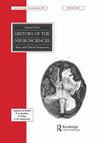Neuropathological images in the great pathology atlases
IF 0.3
3区 哲学
Q3 HISTORY & PHILOSOPHY OF SCIENCE
引用次数: 0
Abstract
ABSTRACT In the period between Morgagni’s De Sedibus (1761) and Cruveilhier’s Anatomie pathologique (1829–1842), six pathology atlases were published, in which neuropathological subjects were discussed and depicted. It was a period of transition in medical, technical, and publishing areas. The first three (by Matthew Baillie, Robert Hooper, and Richard Bright) were mainly atlases derived from pathological museum specimens. They were selective rather than comprehensive. Of the other three (by Jean Cruveilhier, James Hope, and Robert Carswell), most of the observations were made during autopsies. These illustrations required special arrangements so they could be executed during the autopsies. These were available in Paris rather than in London, which is the reason why Hope and Carswell made many of the drawings in France. The plates in these three were color lithographs. Baillie’s book contains only figure descriptions. Bright’s and Cruveilhier’s atlases provide case descriptions. Hooper and Hope provide theoretical texts and figure legends. Carswell’s book has 12 theoretical sections, each followed by plates. The relative cost of the atlases varied with the number of plates. Although the authors made use of artists and engravers, several were talented artists themselves. Many common neurological diseases were depicted.伟大病理图谱中的神经病理学图像
摘要在Morgagni的De Sedibus(1761)和Cruveilhier的Anatomie病理学(1829–1842)之间,出版了六本病理图谱,其中讨论和描述了神经病理学主题。这是一个医疗、技术和出版领域的转型期。前三本(由Matthew Baillie、Robert Hooper和Richard Bright撰写)主要是从病理博物馆标本中提取的图谱。它们是选择性的,而不是全面的。在其他三个(Jean Cruveilhier、James Hope和Robert Carswell)中,大多数观察都是在尸检过程中进行的。这些插图需要特殊安排,以便在尸体解剖期间执行。这些画是在巴黎而不是伦敦绘制的,这就是霍普和卡斯韦尔在法国绘制许多画的原因。这三幅版画都是彩色石版画。贝利的书只包含人物描写。Bright和Cruveilhier的图册提供了案例描述。Hooper和Hope提供了理论文本和人物传说。卡斯韦尔的书有12个理论部分,每个部分后面都有图版。图册的相对成本随着图版的数量而变化。尽管作者利用了艺术家和雕刻师,但也有一些人本身就是才华横溢的艺术家。描述了许多常见的神经系统疾病。
本文章由计算机程序翻译,如有差异,请以英文原文为准。
求助全文
约1分钟内获得全文
求助全文
来源期刊

Journal of the History of the Neurosciences
社会科学-科学史与科学哲学
CiteScore
1.00
自引率
20.00%
发文量
55
审稿时长
>12 weeks
期刊介绍:
The Journal of the History of the Neurosciences is the leading communication platform dealing with the historical roots of the basic and applied neurosciences. Its domains cover historical perspectives and developments, including biographical studies, disorders, institutions, documents, and instrumentation in neurology, neurosurgery, neuropsychiatry, neuroanatomy, neurophysiology, neurochemistry, neuropsychology, and the behavioral neurosciences. The history of ideas, changes in society and medicine, and the connections with other disciplines (e.g., the arts, philosophy, psychology) are welcome. In addition to original, full-length papers, the journal welcomes informative short communications, letters to the editors, book reviews, and contributions to its NeuroWords and Neurognostics columns. All manuscripts are subject to initial appraisal by an Editor, and, if found suitable for further consideration, full- and short-length papers are subject to peer review (double blind, if requested) by at least 2 anonymous referees.
 求助内容:
求助内容: 应助结果提醒方式:
应助结果提醒方式:


